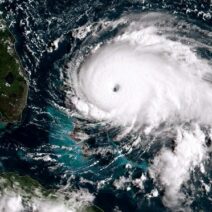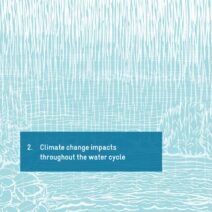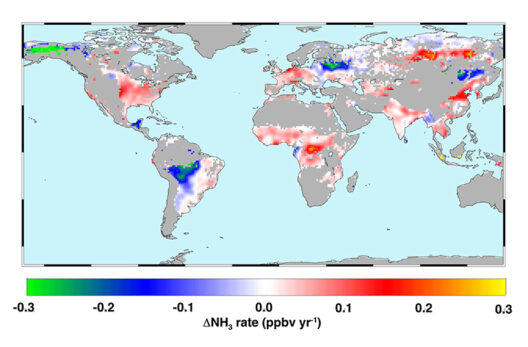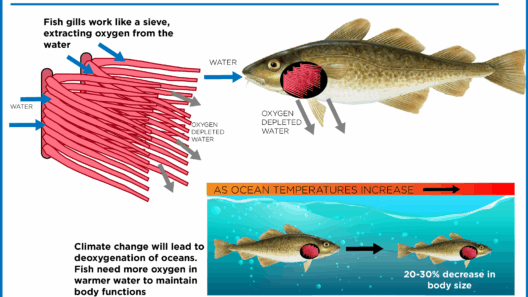The destruction of tropical rainforests is a pressing environmental issue, intricately linked to global warming. This phenomenon is not merely a consequence of human activity; it serves as a fulcrum upon which the delicate balance of our planet’s climate rests. To grasp the enormity of this devastation, it is vital to delve into the mechanisms through which the annihilation of these vital ecosystems compounds the effects of climate change.
Tropical rainforests, often dubbed the “lungs of the Earth,” play an indispensable role in carbon sequestration. Forests function as carbon sinks, capturing carbon dioxide (CO2) from the atmosphere during photosynthesis. This process is vital for mitigating greenhouse gas concentrations, which are primary culprits in global warming. When these forests are felled or burned, the stored carbon is released back into the atmosphere, exacerbating the greenhouse effect. This cycle of destruction fundamentally alters the atmospheric composition, contributing significantly to the rise in global temperatures.
Aside from their carbon storage capabilities, tropical rainforests contribute to the regulation of the earth’s climate through their complex ecosystems. This rich biodiversity includes a multitude of flora and fauna that interact in ways that sustain environmental stability. Each species, from the towering kapok trees to the myriad of understory plants and animals, plays a vital role in maintaining ecological balance. The removal of these trees not only leads to a loss of biodiversity but disrupts local and global climate regulation mechanisms. The intricate web of interactions that manage water cycles, temperature moderation, and even soil fertility is thrown into disarray.
The notion that the destruction of these lush biomes is solely driven by economic gain fails to capture the full picture. Agricultural expansion, particularly for palm oil, soy, and cattle ranching, has emerged as the primary antagonist. The clearing of vast tracts of forestlands not only devastates habitats but also transforms the land into carbon sources. This conversion is especially pernicious as it often leads to practices that degrade soil health, leading to further emissions and diminished agricultural productivity over time.
Moreover, the implications of rainforest destruction extend beyond immediate carbon release. Deforestation generates a cascade of effects that reverberate through ecosystems and human communities. As forests are removed, the natural water cycle is disrupted, leading to altered precipitation patterns. Rainforests draw moisture from the air through a process known as transpiration, and their absence can result in drier climates, further stressing already vulnerable ecosystems. This can create feedback loops – drier conditions can lead to more forest fires, which then increases carbon emissions, further driving global warming.
Another deeply intertwined issue is the socio-economic dimension of rainforest destruction. Indigenous communities, who often act as stewards of these ecosystems, face dire consequences as their livelihoods are threatened. The cultural and spiritual connections that people have with these forests are often disregarded in the face of corporate interests. The loss of biodiversity and cultural knowledge associated with these forests goes hand in hand with escalating global temperatures, as traditional conservation methods that these communities employ are rendered ineffective after the ecological balance is upset.
The intersection of deforestation and climate change presents an alarming paradox. As temperatures rise, the likelihood of severe weather events increases, exemplifying the raw power of climate change. Increased incidence of droughts, floods, and tropical storms endangers both natural and human systems. By destroying the very ecosystems that could help mitigate these changes, humanity finds itself caught in a vicious cycle that continuously fuels the flames of global warming.
To address the challenge of rainforest destruction and its exacerbating effect on climate change, a multi-faceted approach is necessary. One critical strategy involves fostering sustainable land-use practices that prioritize conservation. By implementing agroforestry and sustainable agriculture techniques, it is possible to strike a balance between human needs and ecological preservation. Policies that incentivize sustainable practices and protect existing forests can serve as powerful tools for conservation.
Furthermore, education plays an essential role in fostering an awareness of the importance of tropical rainforests. By emphasizing the interdependence between human well-being and healthy ecosystems, communities and individuals can be empowered to combat deforestation. Collective action, ranging from grassroots movements to international agreements, is pivotal in mobilizing efforts to protect these critical ecosystems.
International cooperation is also imperative. As tropical rainforests are often located in developing nations, wealthier countries can support conservation efforts through funding and resources. By investing in projects that protect forests while promoting economic development, global partnerships can arise to combat the forces driving deforestation. The collaboration of nations is not merely an option; it is a necessity to ensure the survival of tropical rainforests and the stabilization of the global climate.
In conclusion, the destruction of tropical rainforests afoul not only transforms local ecosystems but also perpetuates the broader crisis of climate change. The essential services these forests provide, from carbon sequestration to climate regulation, are irreplaceable. Addressing the root causes of deforestation requires a concerted global effort that recognizes the intrinsic value of these forests. As the world grapples with escalating temperatures and ecological degradation, safeguarding tropical rainforests emerges as a paramount objective. Our future depends on our ability to cherish and protect these vital ecosystems that sustain life on Earth.






